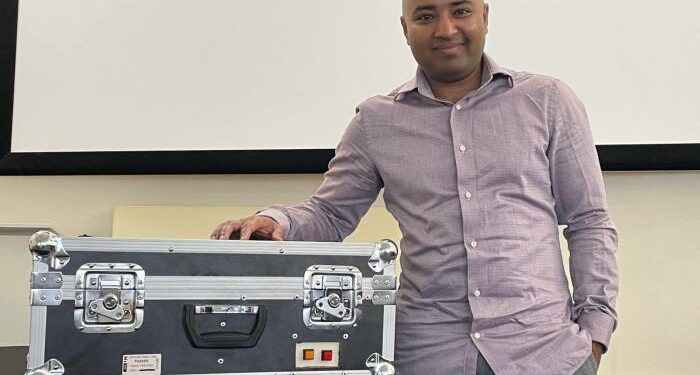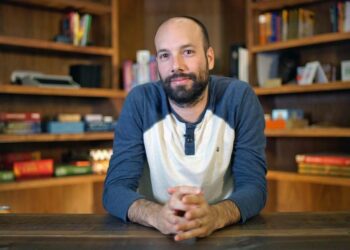Millions of stroke patients could have the lost sense of touch restored to their fingers through a portable device developed at a British university, the British Science Festival heard on Tuesday.
The device, pioneered at the University of Hertfordshire, applies gentle vibrations to the patient’s fingertips, resulting in an improvement of 30 to 40 per cent in their ability to feel things, according to preliminary clinical data.
Development of the technology was led by bioengineer Amit Pujari, who plans to patent aspects of the technology with the university and set up a spinout company to commercialise it.
“That level of improvement could be life-changing for millions of patients, though we have to do more research to find out how durable the improved sense of touch will be,” said Pujari at the festival in Leicester.
More than 100mn people globally are living with the after-effects of stroke, according to the World Stroke Organization. For almost half of them, brain damage has reduced their sense of touch — often to an extent that is seriously disabling.
The device could be rolled out through poorer parts of the world where most stroke patients live, such as Pujari’s native India.
Dr Rubina Ahmed, research director at the UK’s Stroke Association, said she saw real promise in the technology. “It’s quite a novel concept,” she added. “What’s new here is the use of mechanical stimulation in a simple device that could treat patients without them having to go to a specialist clinic.”
The device administers vibrations to the fingertips as “random noise” rather than regular frequency patterns. Pujari said that applying these “makes the network of nerves damaged by stroke more sensitive to normal touch sensations”.
Scientists established almost two decades ago that vibration therapy could be useful for stroke therapy, he added.
But Pujari said that, “because of the technical problems and unknowns about the neuroscience, there is nothing available on the market to exploit the idea so that it can be given to patients in their homes or in NHS clinics”.
With funding from the Royal Academy of Engineering and other public research bodies, Pujari — alongside a team of researchers — developed the technology to administer the stimulus in a way that is most effective at restoring sensation.
The vibrations are very gentle — hard to feel by people with a normal sense of touch and imperceptible by stroke patients.
The suitcase-sized prototype has been tested on about 40 patients from stroke clinics in the UK and India. The results of these had been positive and would soon appear in scientific journals, said Pujari.
Further trials are being planned to establish how long the benefits of using the device last. The engineers are also looking at how to miniaturise it.
It could be reduced in size to a small box and in cost to a few hundred pounds, said Pujari. Vibration therapy would then be transportable to patients’ homes or available through general practitioners.











